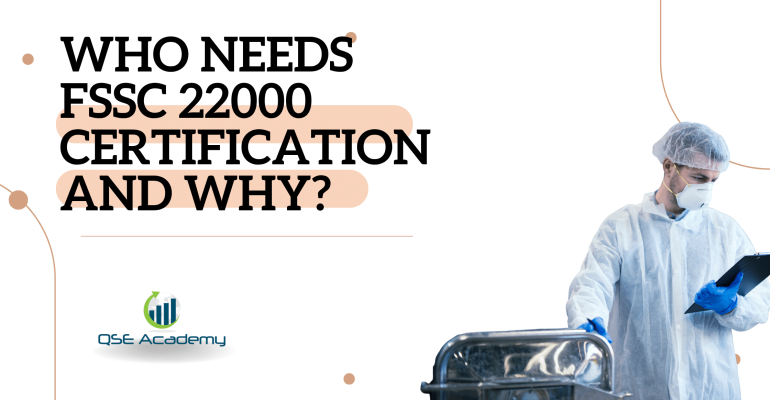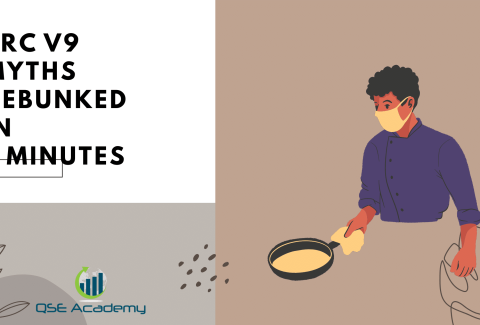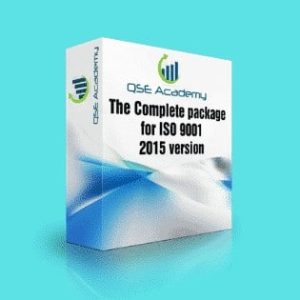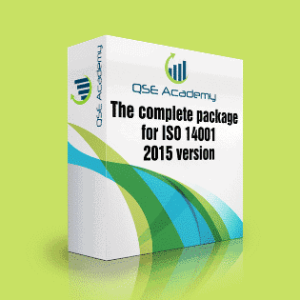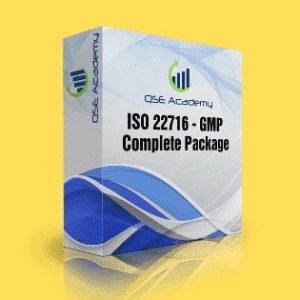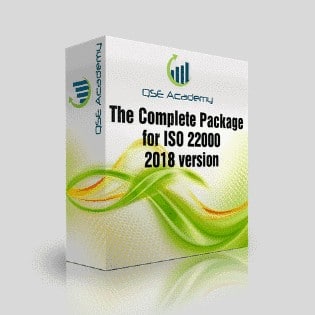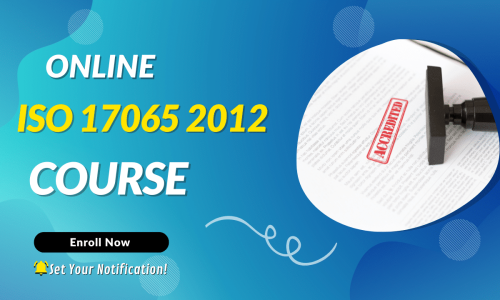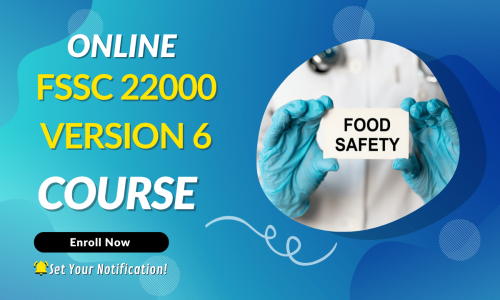Who Needs FSSC 22000 Certification and Why?
Last Updated on October 13, 2025 by Hafsa J.
Who Needs FSSC 22000 Certification and Why?
If you’re working in the food industry right now—whether you’re producing, packaging, shipping, or storing food—you’ve probably heard about FSSC 22000 certification more than once. And maybe you’re wondering: “Is this something we actually need, or is it just another expensive piece of paper?”
I get it. That’s a question I’ve helped companies answer for over ten years.
In that time, I’ve worked with small family-run manufacturers and massive global suppliers alike—and here’s the truth: FSSC 22000 isn’t for everyone, but for the right businesses, it’s a total game changer. Not just for compliance, but for growth, credibility, and peace of mind.
This article is here to give you a straight answer—no fluff, no marketing spin. We’re going to look at:
-
Who actually needs FSSC 22000 certification
-
Why certain industries and buyers demand it
-
And how it impacts your day-to-day operations (for better or worse)
So whether you’re trying to meet customer requirements, break into new markets, or just get ahead of the competition, you’ll walk away from this guide with a clear understanding of whether FSSC 22000 is the right fit—and why.
Let’s dive in.
What Is FSSC 22000 Certification and Who Recognizes It?
Let’s start with the basics—because before you decide if you need it, you should know what FSSC 22000 actually is and why it carries so much weight in the food industry.
So, what is it?
FSSC 22000 is a globally recognized food safety certification scheme that’s built on ISO 22000, plus industry-specific prerequisite programs (PRPs) and a handful of additional requirements added by the FSSC Foundation. In plain terms:
It’s ISO 22000—but stronger, deeper, and trusted by major buyers around the world.
And here’s the big reason people care about it:
It’s benchmarked by the Global Food Safety Initiative (GFSI). That matters because most global retailers, distributors, and importers require GFSI-recognized certification to do business with you.
Who trusts FSSC 22000?
Plenty. FSSC 22000 is recognized by:
-
Major global retailers and food brands
-
Regulatory bodies in many countries
-
International food buyers in Europe, Asia, the Middle East, and beyond
-
Certification bodies and auditors as a “gold standard” of food safety
I’ve had clients tell me, “We’ve had ISO 22000 for years—but a new customer wouldn’t even schedule a supplier meeting until we added FSSC to the list.” That’s how big the trust factor is.
Pro Tip
If your customer, buyer, or importer is asking for a “GFSI-recognized” standard, FSSC 22000 checks that box. ISO 22000 alone doesn’t. That’s a critical difference most companies don’t realize until it’s too late.
Key Industries That Require FSSC 22000 Certification
Now that we’ve cleared up what FSSC 22000 is, let’s get into the real question:
Who actually needs it?
Here’s what I’ve seen time and again—companies delay getting certified because they assume it’s only for “big food manufacturers.” But the truth is, FSSC 22000 applies to way more sectors than most people realize.
If you’re in any of the industries below, this certification isn’t just helpful—it may already be expected by your customers or regulators.
1. Food and Beverage Manufacturers
Whether you’re producing packaged snacks, canned goods, frozen meals, or beverages—FSSC 22000 is becoming the standard. Especially if you’re exporting or supplying to global brands.
Client example:
A medium-sized frozen fruit processor couldn’t sign with a European retail chain until they upgraded from ISO 22000 to FSSC 22000. The buyer’s purchasing policy required it—no exceptions.
2. Food Packaging Manufacturers
If you produce packaging materials that come into contact with food—films, trays, cartons, labels—you’re part of the food safety equation. Contamination risks don’t stop at ingredients.
Why FSSC matters here:
The scheme includes sector-specific PRPs like ISO/TS 22002-4, which apply directly to packaging manufacturing environments.
3. Animal Feed and Pet Food Producers
More countries are enforcing traceability and risk management in the feed supply chain—especially for livestock and pet food. If your product is going into a food-producing animal, FSSC 22000 certification can open up regulated markets.
4. Transport, Storage, and Distribution Companies
If you’re handling, storing, or shipping food products, buyers want to see you’re managing risks like temperature control, cross-contamination, and traceability. FSSC 22000 includes modules for logistics providers under its expanded scopes.
5. Retail, Catering, and Food Service Chains
Think this is just for manufacturers? Not anymore. Large food service chains, institutional caterers, and retailers are starting to adopt FSSC 22000 to standardize food safety across locations.
From the field:
One of our multinational retail clients used FSSC 22000 to tighten up their global supply chain—certifying their distribution hubs and internal food prep operations for consistency and risk control.
Pro Tip
Even if you’re not legally required to have FSSC 22000, your buyer might require it to continue doing business. Always check customer specifications before assuming ISO or HACCP is enough.
When FSSC 22000 Is Required by Law or Buyer Mandates
Let’s cut to the chase—FSSC 22000 isn’t always a legal requirement, but in many cases, you’ll need it whether the government says so or not. Why? Because your customers might demand it. And if they do, it becomes your new reality.
Buyer Requirements: The Silent Mandate
More and more, global food buyers—including supermarket chains, international brands, and large distributors—are baking FSSC 22000 into their supplier approval processes.
If you want to be on their list, you need to be certified.
Real example:
A client of ours in the spice trade was happily operating with ISO 22000 until a major EU buyer required FSSC 22000 as a condition for continuing their contract. The exporter had 90 days to upgrade—or lose the deal. They transitioned just in time.
Regulatory Pressure Is Growing Too
While FSSC 22000 may not be embedded into law in most countries, some regions now recognize it as part of regulatory compliance—especially in food import/export scenarios.
-
Europe: Often favors GFSI-recognized standards for imports
-
Middle East: Retailers and government buyers lean heavily on FSSC and BRCGS
-
Asia-Pacific: Markets like Japan, Singapore, and South Korea increasingly reference GFSI schemes in procurement
When Legal Compliance Isn’t Enough
Here’s the key insight: Just because you’re legally compliant doesn’t mean you’re “market-ready.” Certification like FSSC 22000 often goes beyond basic food law to prove your system is robust, risk-based, and independently verified.
Buyers know that—and that’s why they trust it.
Pro Tip
If your products cross borders—especially into the EU, Middle East, or high-end retail chains—assume that FSSC 22000 (or another GFSI scheme) will eventually be expected. Planning early keeps you from scrambling later.
FSSC 22000 vs Other Food Safety Certifications: What’s the Right Fit?
If you’re trying to figure out whether FSSC 22000 is your best option, you’re not alone. I’ve walked dozens of companies through this exact comparison—FSSC 22000, ISO 22000, BRCGS, SQF—and the truth is, each has strengths. But they’re not interchangeable.
So let’s break it down clearly, based on what really matters to your business.
FSSC 22000 vs ISO 22000: The Most Common Misunderstanding
This one comes up a lot:
“We already have ISO 22000—so we’re good, right?”
Well… almost. ISO 22000 is a solid foundation, but it’s not recognized by GFSI, which means some buyers and international markets may not accept it.
FSSC 22000 builds on ISO 22000 by adding:
-
Sector-specific PRPs
-
Additional requirements (like food safety culture and equipment management)
-
GFSI benchmarking
Bottom line:
If ISO 22000 is the engine, FSSC 22000 is the full vehicle that gets you through the gates.
FSSC 22000 vs BRCGS: Flexibility vs Prescriptiveness
BRCGS (formerly BRC) is another GFSI-recognized scheme, but it’s very prescriptive—lots of detailed, clause-by-clause requirements and a strict scoring system.
FSSC 22000, on the other hand, gives you more room to build your system around your existing processes, especially if you’re already aligned with ISO standards like ISO 9001 or ISO 14001.
When FSSC makes more sense:
-
You’re already using ISO-based systems
-
You want more flexibility and internal ownership
-
Your team prefers a process-based approach over a point-based audit
What About SQF?
Safe Quality Food (SQF) is widely used in North America and is often favored by U.S. retailers. Like BRCGS, it’s more prescriptive and structured. For companies with U.S. distribution goals, it can be a strong option.
But if you’re looking for a globally recognized, ISO-based standard that works across multiple markets, FSSC 22000 is often the better strategic move.
Real-Life Perspective
One of my clients—a regional dairy producer—was ISO 22000 certified and considering BRCGS due to new customer requirements. After weighing the options, they went with FSSC 22000 because it allowed them to:
-
Reuse 80% of their existing documentation
-
Avoid the steep learning curve of BRCGS
-
Maintain consistency across their ISO-based systems
It saved them time, money, and a lot of internal resistance.
Pro Tip
Choosing a food safety standard isn’t just about the certificate—it’s about the fit for your business model, your culture, and your customers’ expectations. FSSC 22000 hits the sweet spot for companies that want flexibility, global reach, and ISO alignment.
Business Benefits of FSSC 22000 Certification
Let’s be real—getting certified isn’t cheap or easy. It takes time, training, and a serious commitment from your team. So the obvious question is: what do you actually get out of it?
Here’s what I tell clients who are on the fence:
FSSC 22000 isn’t just about compliance—it’s about business growth, credibility, and control. And when implemented right, it pays off in ways that go far beyond the certificate on your wall.
1. Unlock Access to New Customers and Markets
This is the big one. FSSC 22000 is GFSI-recognized, which means it’s trusted by major food buyers worldwide. That includes:
-
Global retailers (especially in Europe and the Middle East)
-
International distributors and trading companies
-
High-volume manufacturers looking for reliable suppliers
What that means:
You can enter supply chains you previously couldn’t touch—just by showing that FSSC logo on your audit report.
Client example:
A seafood processor I worked with picked up three new retail clients in Southeast Asia within six months of certification. The only thing that changed? Their FSSC 22000 certificate.
2. Fewer Customer Audits, More Operational Freedom
Once you’re certified, many of your buyers reduce or even eliminate their own audits. That saves your team hours (or days) of prep and disruption every year.
3. Stronger Risk Management and Food Safety Control
FSSC 22000 pushes you to build a structured, risk-based system. That means:
-
Better documentation
-
Stronger process controls
-
Fewer surprises when something goes wrong
Bonus: It also makes your internal audits more useful—not just something you rush through before the external auditor shows up.
4. Boosted Reputation and Brand Trust
Let’s face it—certification sends a message. To investors, customers, regulators, and even employees, it shows you’re serious about doing things right.
I’ve seen businesses use FSSC 22000 as part of their sales pitch, their packaging, and even their recruitment strategy. It builds confidence—inside and out.
5. Alignment With Other ISO Standards
If you’re already using ISO 9001 (quality), ISO 14001 (environment), or ISO 45001 (safety), FSSC 22000 fits right in. The structure is similar, which makes integration smoother and more cost-effective.
Pro Tip
Don’t treat certification as the end goal—it’s a springboard. Use the FSSC framework to drive operational improvements, reduce rework, and strengthen your food safety culture. The certificate should reflect what you’ve already built—not cover up what’s missing.
Pro Tips and Expert Insights: What Actually Works
After helping dozens of businesses get certified—and stay certified—I can tell you this: success with FSSC 22000 doesn’t come from ticking boxes. It comes from being smart, strategic, and focused on what actually matters.
Here are the tips I give my own clients when they’re preparing for FSSC 22000 certification:
Pro Tip 1: If You’re Already ISO 22000 Certified, You’re Closer Than You Think
FSSC 22000 builds on ISO 22000. So if you’ve already laid that foundation, transitioning can be faster and cheaper than you expect. Focus your energy on the additional FSSC requirements—like PRPs, food safety culture, and traceability controls.
What to do: Run a focused gap analysis between ISO and FSSC, and you’ll know exactly where to improve.
Pro Tip 2: Know What Your Buyers Expect—Then Work Backward
Before jumping into certification, talk to your customers. Some may require FSSC. Others might accept BRCGS or SQF. Knowing this upfront helps you choose the right scheme and avoid wasting time.
Client story:
A packaging company was ready to invest in SQF until their top buyer clarified they only recognized FSSC. That one email saved them thousands in misdirected prep.
Pro Tip 3: Use Certification to Build Buy-In Internally
Don’t just make certification an “audit thing.” Use it to align your team around food safety goals, clarify responsibilities, and improve accountability. When employees understand why it matters, they perform better—and audits go smoother.
Pro Tip 4: Make Documentation Work For You, Not Against You
FSSC requires clear, consistent documentation—but that doesn’t mean piles of paperwork. Focus on usable SOPs, quick-reference forms, and digital systems that actually support your process. If no one reads your procedures, they’re not helping you pass an audit.
Pro Tip 5: Schedule a Mock Audit Before the Real Thing
This one’s simple but powerful. Run an internal audit—or bring in a consultant—to simulate the actual certification audit. It’ll help you catch gaps, fine-tune responses, and reduce stress on audit day.
In my experience:
Companies that do this have far fewer nonconformities, and their staff walks into the real audit with confidence—not confusion.
Common Mistakes and FAQs About FSSC 22000 Certification
Let’s be honest—even well-managed food businesses stumble during FSSC 22000 prep. And often, it’s not because they don’t care or aren’t doing the work. It’s because they misunderstand what auditors are really looking for.
Below are the mistakes I see most often—and the questions that come up every time I guide a team through certification.
Common Mistakes to Avoid
Mistake 1: Thinking ISO 22000 Alone Is Enough
I’ve seen companies fail audits because they assumed ISO 22000 covered everything. It doesn’t. FSSC 22000 includes extra requirements that ISO doesn’t touch—like PRPs, food fraud prevention, and food safety culture.
Mistake 2: Starting Prep Too Late
Companies often wait until a customer demands certification—and then scramble. Realistically, you need three to six months to do it right without overwhelming your team.
Mistake 3: Treating Documentation Like a Paper Exercise
Just having a procedure isn’t enough. Auditors will ask staff to explain and demonstrate what’s in those documents. If your team doesn’t understand them, it’s a red flag.
Mistake 4: Ignoring the PRPs
This one trips people up. PRPs aren’t “just hygiene basics”—they’re core to passing the audit. You need validated cleaning, pest control, allergen control, and maintenance systems, with records to prove they work.
Frequently Asked Questions
Q1: Is FSSC 22000 mandatory?
Not by law in most places. But it’s often required by buyers, especially in export markets or global supply chains. If a customer asks for GFSI recognition, FSSC 22000 qualifies—ISO 22000 alone does not.
Q2: Can small businesses get certified?
Absolutely. In fact, many small and mid-sized facilities get certified every year. The key is scaling your system to match your operations—you don’t need a massive corporate structure to succeed.
Q3: How long does certification take?
It depends on where you’re starting from. If you’re already ISO 22000 certified and have decent documentation, it could take as little as three months. Starting from scratch? Plan for closer to six.
Q4: What’s the cost?
Costs vary by site size, scope, and the certifying body. But beyond the audit fee, your biggest investment is usually in training, documentation, and internal preparation. And yes—it’s worth it.
Is FSSC 22000 Certification Right for You?
By now, you’ve got a clear picture of what FSSC 22000 is, who it applies to, and why it’s become a powerful tool in the food industry.
And here’s the honest truth I share with every client:
If you’re operating in the food supply chain—and you want to grow, export, or earn long-term trust—FSSC 22000 is one of the smartest moves you can make.
It shows your team is serious about food safety.
It puts you on the radar of global buyers.
And it helps you build a system that actually works—not just one that passes an audit.
Why You Can Trust This Advice
I’ve been helping food businesses—large and small—navigate certifications for over a decade. I’ve seen the shortcuts that backfire, the wins that change the game, and the exact steps that turn “we’re not ready” into “we passed with confidence.”
Your Next Step
If you’re thinking about getting certified, don’t wait until it’s urgent. Start now—on your own terms. Whether you need a gap checklist, an implementation roadmap, or one-on-one help, we’re here to guide you.
Reach out to us for a free readiness call or download our quick-start FSSC 22000 guide to see where you stand.
Your certification journey doesn’t have to be complicated. It just has to be clear—and built for your business.
Let’s make that happen.
Whether it’s ISO 9001, ISO 22000, or the cosmetics-focused ISO 22716, I’ve spent my career I’m not here to call myself an expert—I prefer “enthusiast” because I truly love what I do. When I’m not writing about standards, you’ll probably find me playing Piano 🎹, connecting with people, or diving into my next big project💫. I’m an engineer specialized in the food and agricultural industry
make ISO standards less intimidating and more approachable for everyone.
turning complex jargon into clear, actionable steps that businesses can actually use.
There’s something incredibly rewarding about helping people navigate food safety and quality management systems
in a way that feels simple, practical, and even enjoyable.
I have a Master’s in QHSE management and over 12 years of experience as a Quality Manager
I’ve helped more than 15 companies implement ISO 9001, ISO 22000, ISO 22716, GMP, and other standards
My clients include food producers, cosmetics manufacturers, laboratories, and service companies
I believe quality systems should be simple, useful, and efficient.

